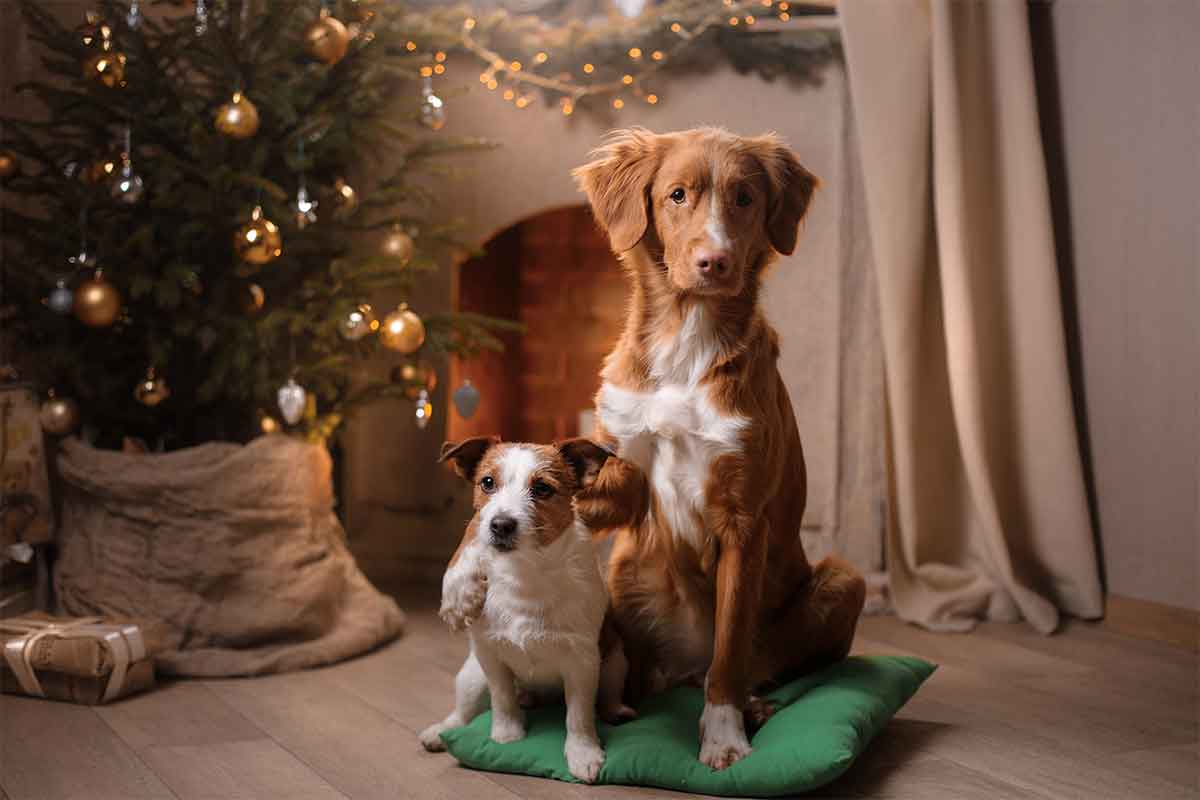Christmas without a tree would be like Flag Day without a flag. The tree is an important tradition for many families. And it’s typically pretty simple—purchase the tree, and if it’s a real tree do your best to keep it thriving as long as possible.
That’s until a pet is involved. Any pet. For a pet parrot given flight, a tree can be more than a destination to land. Parrots can pick apart and destroy the tree and even ornaments on it in moments. Curious cats and ferrets love to climb, of course. And dogs can pull a tree down by jumping up to grab an interesting ornament.
Still, Christmas trees can be compatible with pets, as long as you take some precautions and set realistic goals.
Rule number one: No tinsel, please. Because it’s shiny and may even gently move, it’s incredibly tempting to puppies and cats. If swallowed, however, it can cause a serious medical emergency.
Rule number two: Make the tree a no-fly zone for parrots. For the weeks the tree is in the home, it’s best to limit parrot exercise to other rooms, away from the tree.
Rule number three: No glass ornaments. Should the pet swat at the ornament and it tumbles, you now have a mess of broken glass, which may be a danger to pets and people (particularly toddlers). Display breakable antique ornaments where people can see them, but pets can’t get to them. Why take chance that your pup or cat may break an heirloom that’s been in the family for generations?
Rule number four: Secure the tree. Talk to your Christmas tree provider for ways to do this. One option is to use fishing line to anchor the tree to the wall or ceiling. Doing so may prevent a toppled tree from falling on pets, people, or household items.
Here are some additional tips:
Cats may be swayed from climbing the tree if it is sprayed with a manufactured product with a bitter smell (many are available wherever pet products are sold). But the real secret is to offer better climbing opportunities in the same room where the tree is located. That climbing destination may be a place where the cat currently climbs, made even more appealing by offering food and toys there or interesting scents, such as catnip, Valerian root, or silver vine. If the cat is kept busy checking out a window ledge or a shelf for food or toys, the Christmas tree may soon become less interesting.
When choosing a Christmas tree, consider your pet(s). Douglas fir and white pine have pliable needles that aren’t likely to prick paws. But even the softest needles can stick it to a sensitive digestive system. Pediatricians and veterinarians report many cases of children and puppies chewing on needles.
While needles from real trees aren’t toxic to pets, they can potentially cause an obstruction or the pet may choke. Fortunately, those are rare occurrences. More often the pet feels “off” for a few days and then throws up. Needles from artificial trees can fall off too, and may also cause intestinal distress or injury. To be on the safe side, vacuum or sweep up errant needles frequently.
People sometimes go to great lengths to keep their trees alive as long as possible, using manufactured products added to the tree water. Homemade “tree-ternity recipes” found online include birth control pills, dog urine, salt, beer, vinegar. Some of these brews are unhealthy for pets to drink. A skirt around the tree can prevent pets from drinking these wacky concoctions.
With a little forethought and care, you can enjoy your tree without worrying that your pet will harm it or that it will harm your pet.
This article was reviewed/edited by board-certified veterinary behaviorist Dr. Kenneth Martin and/or veterinary technician specialist in behavior Debbie Martin, LVT








